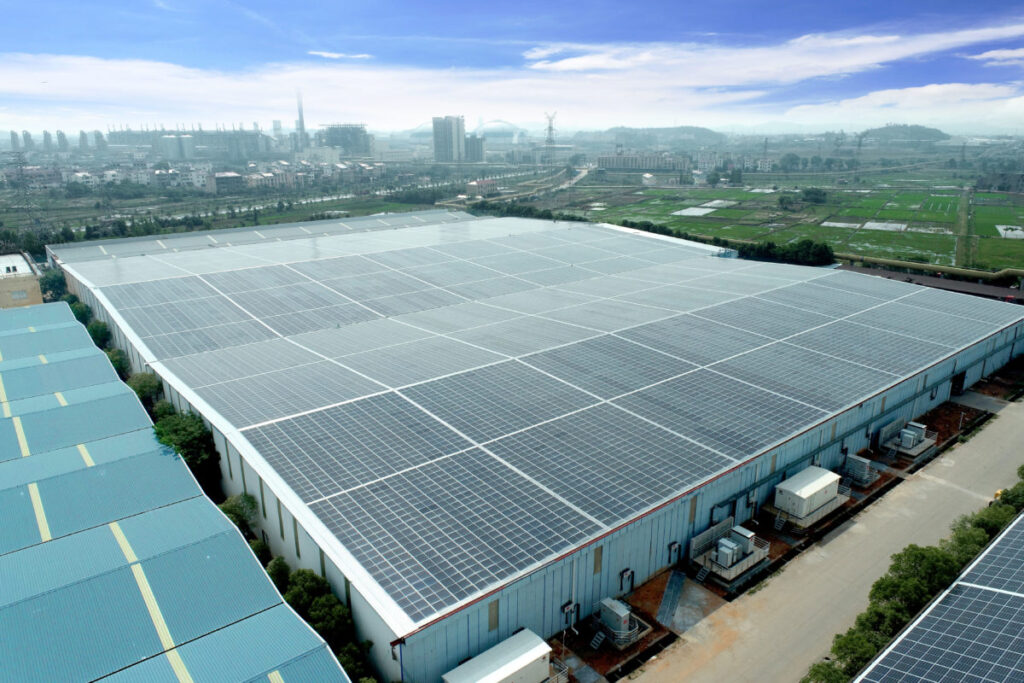BIPV stands for “Building-Integrated Photovoltaics,” and BIPV solar panels are a type of solar panel that is integrated directly into the building’s structure or architectural elements. Unlike traditional solar panels that are mounted on top of existing roofs or structures, BIPV panels serve a dual purpose by not only generating electricity but also functioning as a part of the building envelope. BIPV systems are designed to blend in seamlessly with the building’s aesthetics while harnessing solar energy.
- Integration with Building Materials: BIPV panels can be incorporated into various building materials, including roofing materials, façades, windows, and skylights. They come in different forms such as solar shingles, solar tiles, solar glass, and more.
- Aesthetic Appeal: BIPV systems are known for their ability to enhance the appearance of buildings. They can be designed to match the architectural style and color scheme of the structure, making them less obtrusive and more visually appealing than traditional solar panels.
- Energy Generation: Just like traditional solar panels, BIPV systems capture sunlight and convert it into electricity. They are capable of generating clean, renewable energy to power the building’s electrical systems.
- Energy Efficiency: BIPV systems can contribute to improved energy efficiency by providing shading, reducing heat gain, and insulating the building. This can lead to lower cooling and heating costs.
- Space Efficiency: BIPV systems make efficient use of space since they replace or integrate with existing building materials. This is particularly beneficial for buildings with limited roof or ground space for traditional solar panels.
- Environmental Benefits: By harnessing solar energy, BIPV systems reduce the carbon footprint of buildings and help combat climate change. They promote sustainable construction practices.
- Longevity: BIPV panels are designed to be durable and weather-resistant, much like traditional solar panels. They are built to withstand the elements and have a lifespan similar to or longer than the building itself.
- Market Availability: BIPV products have been increasingly adopted in the construction industry, and as the technology advances, more options become available to builders and homeowners.
It’s important to note that BIPV systems may have different electrical and installation requirements compared to traditional solar panels. They often involve collaboration between solar installers, architects, and builders to ensure proper integration into the building design and electrical systems. BIPV installations must also comply with local building codes and regulations.
While BIPV panels offer numerous advantages, they are often more expensive than traditional solar panels on a per-watt basis due to the additional design and integration requirements. However, their aesthetic and functional benefits can make them a compelling choice for certain building projects, especially those focused on sustainability and design aesthetics.


